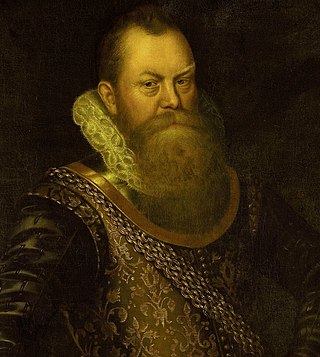Top Qs
Timeline
Chat
Perspective
Frederick de Houtman
Dutch navigator, colonial governor (c.1571–1627) From Wikipedia, the free encyclopedia
Remove ads
Frederick de Houtman (c. 1571 – 21 October 1627) was a Dutch explorer, navigator, and colonial governor who sailed on the first Dutch expedition to the East Indies from 1595 until 1597, during which time he made observations of the southern celestial hemisphere and contributed to the creation of 12 new southern constellations.
Remove ads
Career
Summarize
Perspective
East Indies
De Houtman was born in Gouda. De Houtman assisted fellow Dutch navigator Pieter Dirkszoon Keyser with astronomical observations during the first Dutch expedition to the East Indies from 1595 until 1597.[1] In 1598, de Houtman sailed on a second expedition led by his brother, Cornelis de Houtman, who was killed during the voyage. Frederick was imprisoned by the Sultan of Aceh, Alauddin Riayat Syah, in northern Sumatra.
He used his two years of captivity—from September 1599 until August 1601—to study the local Malay language and to make astronomical observations. These observations supplemented those made by Keyser on the first expedition. The constellations formed from their observations were first published in 1597 or 1598 on a globe by Petrus Plancius, and later globes incorporated adjustments based on De Houtman's later observations.[2]
Credit for these constellations is generally assigned jointly to Keyser, De Houtman, and Plancius, though some of the underlying stars were known beforehand.[1] The constellations are also widely associated with Johann Bayer, who included them in his celestial atlas, Uranometria, in 1603. After De Houtman's return to Europe, De Houtman published his stellar observations in an appendix to his dictionary and grammar of the Malayan and Malagasy languages.[3]
Australia
In 1619 De Houtman sailed in the Dutch East India Company ship Dordrecht, along with Jacob Dedel in the Amsterdam.[4] They sighted the Australian coast near present-day Perth, which they called Dedelsland. After sailing northwards along the coast he encountered and only narrowly avoided a group of shoals, subsequently called the Houtman Abrolhos.
De Houtman then made landfall in the region known as Eendrachtsland, which the explorer Dirk Hartog had encountered earlier. In his journal, De Houtman identified these coasts as Locach, mentioned by Marco Polo to have been a country far south of China and indicated as such on maps by cartographers Plancius and Linschoten.[5][6]
Remove ads
See also
- John Davis – English explorer who accompanied De Houtman on the first East Indies' expedition as its pilot
References
External links
Wikiwand - on
Seamless Wikipedia browsing. On steroids.
Remove ads

